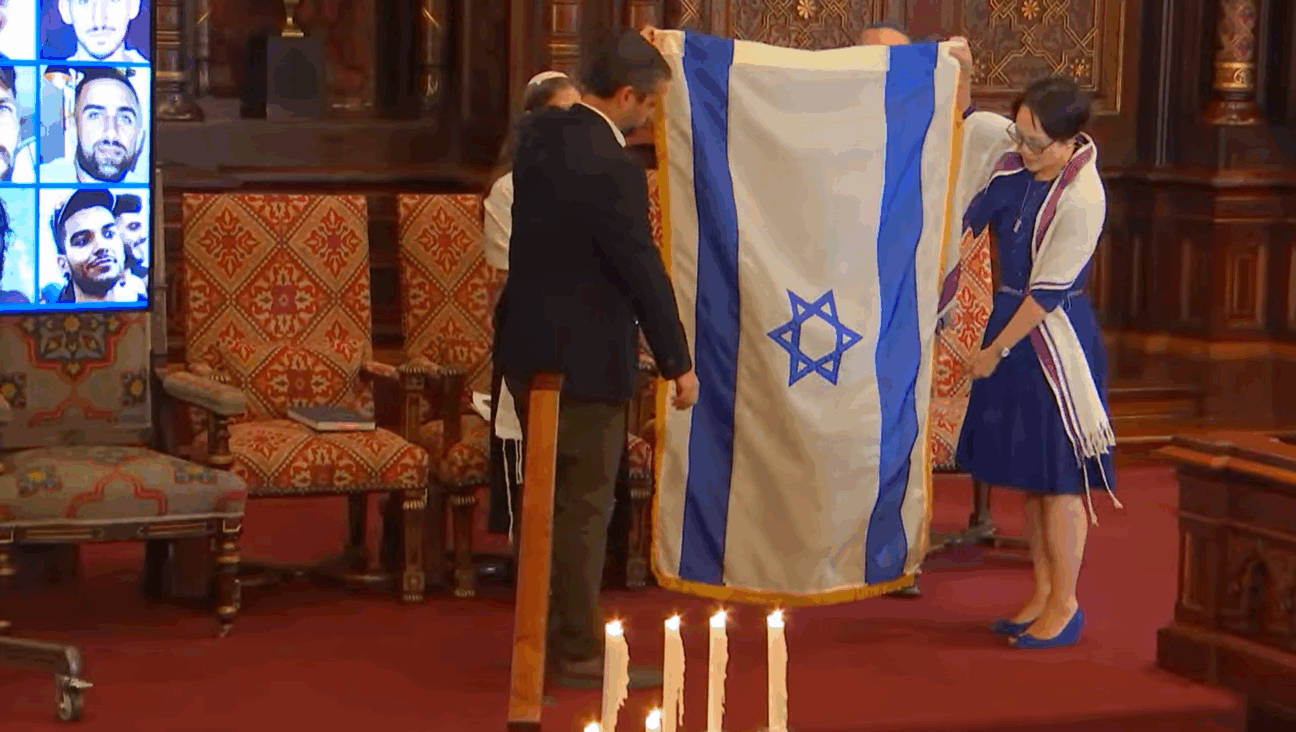I’m 13 Years Old and Israel’s Chief Rabbi Is Wrong About My School

Graphic by Angelie Zaslavsky
On December 1, Israeli Minister of Education Naftali Bennett visited my school, Solomon Schechter School of Manhattan (SSSM). During his visit, me and a couple of other fortunate middle-schoolers got to meet with him and ask him a couple of questions. Minister Bennett was very interested to learn about how our school teaches Judaism. Shortly after that he joined us for shira be’tzibur (sing-along), a gathering of the whole school once a month and on special occasions in which we come together and sing Hebrew songs as a community. Later that day Minister Bennett tweeted: “Meeting with the pupils of the wonderful Conservative school ‘Solomon Schechter’ in New York. So much love of Israel and so much love of Judaism.”
On December 9, news broke that Israeli Chief Rabbi David Lau had criticized Minister Bennett in a radio interview, saying, “Bennett should be asked if he took advice from a rabbi before his meeting, and I suspect very much that he didn’t, since this behavior is not acceptable to the general Jewish public… If Bennett would have asked my opinion before the visit I would have said to him explicitly, ‘You cannot go somewhere where the education distances Jews from tradition, from the past, and from the future of the Jewish people.’”
While I am not in a position to argue with the Chief Rabbi, I thought people should know more about the way my school embraces Jewish education and values. The guiding principle of my school’s approach to Judaism could be summarized in one word: menschlichkeit. A mensch is a person of honor and integrity, but to Schechter a mensch is much more than that. It is someone who goes out of his way to help others, and who believes, like the Bible says, that you should love your friends as you love yourself. It is someone who supports both themselves and others and reflects their Jewish heritage onto others.
Menschlichkeit is a vibrant part of everyday learning at Schechter. On a daily basis kids are seen helping one another. You can see a child stop his project and go to someone who is struggling and take a minute out of his day to ensure that s/he gains the same understanding that everybody else does.
Schechter has many other ways of helping children embrace Judaism. In elementary school kids have room to draw on their siddurim in order to help them connect to the prayers and delve deeper into them. In 2nd grade at Schechter on every Friday one child is given a “mensch of the week” certificate. The certificate is given to a child who was especially “meschy” that week. This certificate serves as motivation for the children to behave their best and be better people.
Also, every year at Schechter almost every grade has a unit on Israel where we learn about the society, the hardships of the country, and then sometimes have a project related to this. Additionally, at services we always sing both the American and the Israeli anthem to pay homage to both countries.
Lastly, Schechter has a program called Gesher (bridge) in which 1-2 kids from each grade meet up monthly on Jewish holidays and do activities together so everybody gets a feeling of togetherness.
In the middle school nearly all of these traditions are continued but some are added on. There, everybody reads from the Torah at least once and has the option to be a gabbai (master of service) or a chazan (cantor). Additionally, every student has their Bar/Bat Mitzvah celebrated at school with the whole middle school and their Gesher group.
Our school puts a special emphasis on the study of the Holocaust. Every middle school class studies the Holocaust and has a full unit about it, which is very helpful because many children in our school, including me, have Holocaust survivors in the family.
Throughout the years, kids at Schechter learn Talmud in chevruta (study partnership). I think that one passage that we studied last year is very relevant to this topic. The passage in the Talmud tells about someone who saw a man chasing after another man. The passage states that this someone followed the two men into a cave. When he reached the cave he saw one man holding a knife with blood on it and the other lying on the ground dead. The rabbis in the Talmud say that if you saw this, you actually have not seen anything. What they mean by this is that you should not judge someone or something unless you see it with your own eyes and that you should be very careful in assuming something even if it seems very reasonable.
Minister Bennett’s decision to come and see our school with his own eyes is in line with what the Talmud asks us to do. His judgment of our school therefore not only makes us very proud but also makes him someone who follows the Jewish tradition of refraining from judgment of things before you see them with your own eyes.
Amnon Scharia is an 8th grader at Solomon Schechter school of Manhattan.















